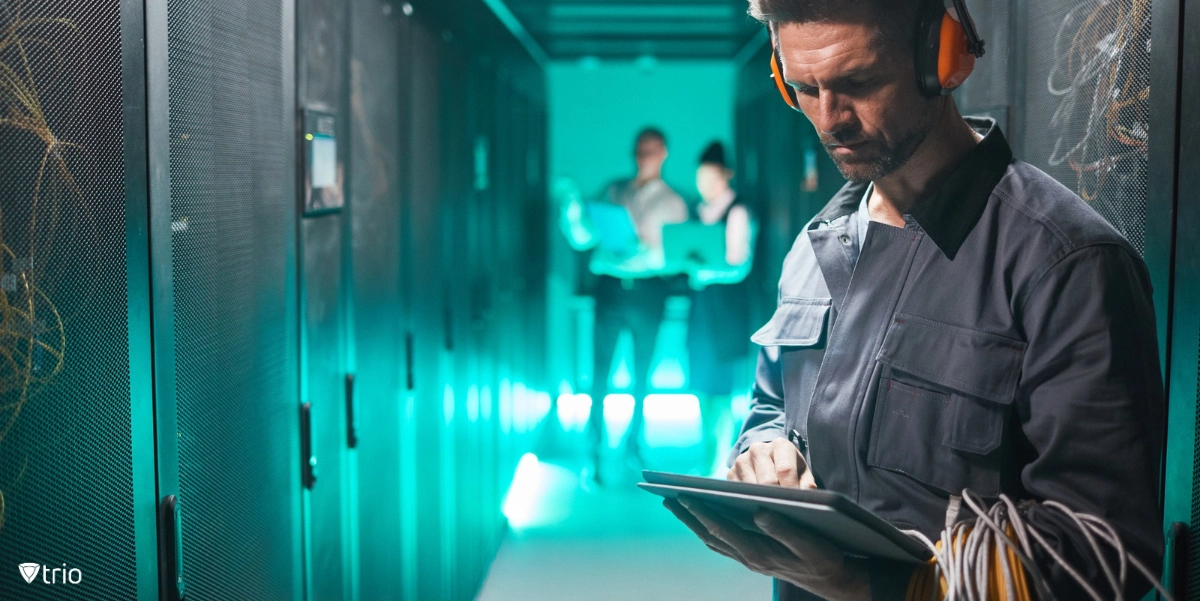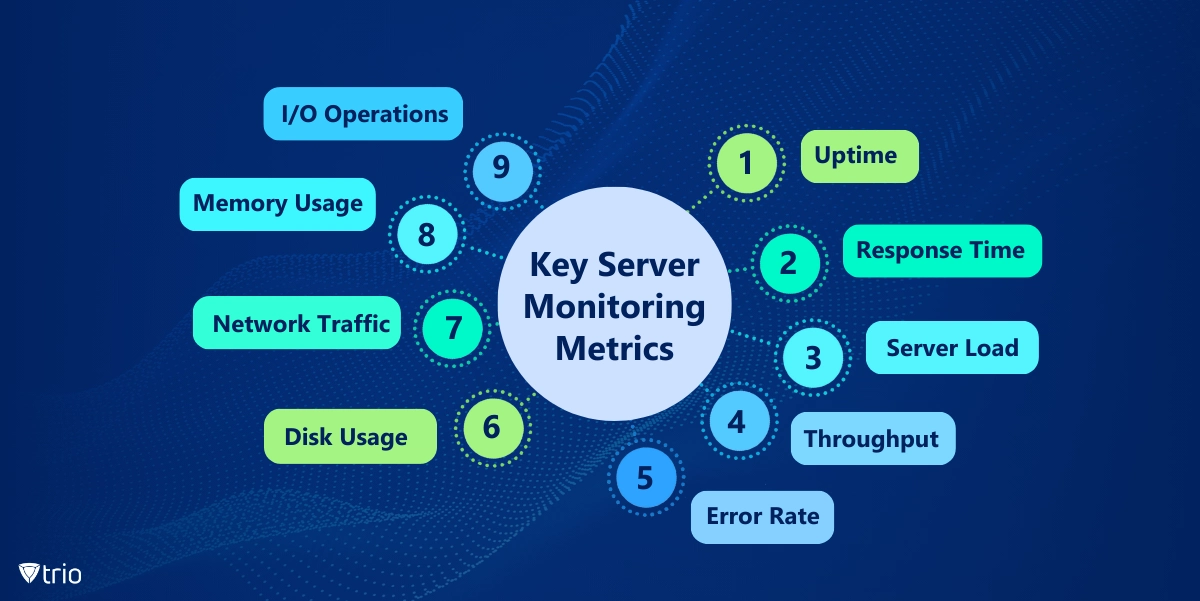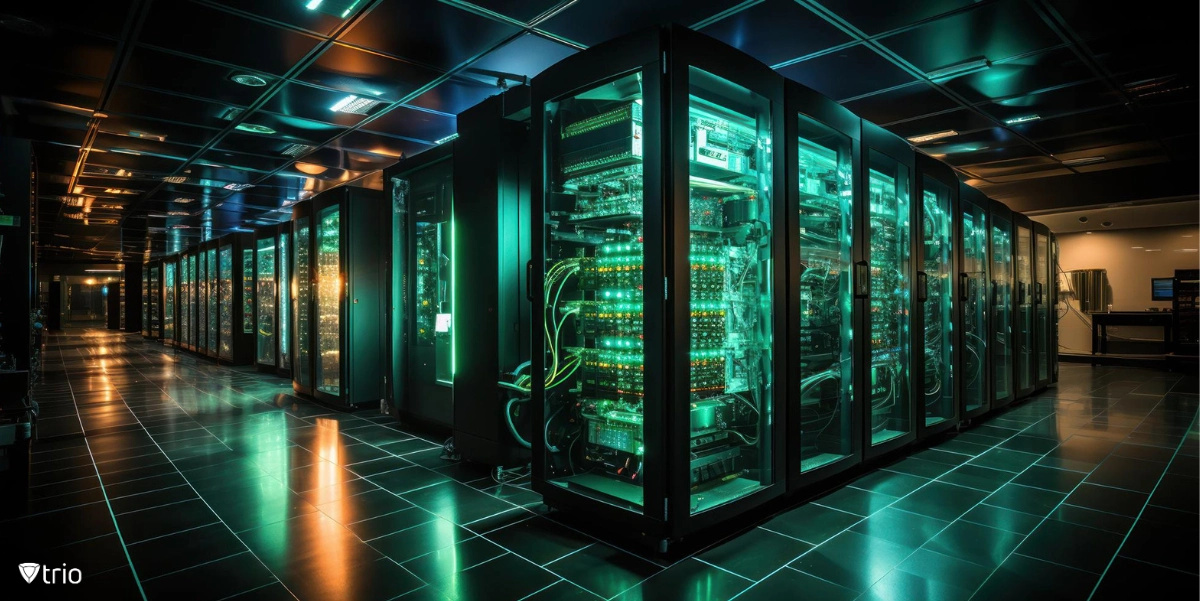In the fast-paced world of IT infrastructure management, the effective oversight of server systems is paramount to the success of any organization. According to Statista.com, “In 2020, global server market revenues reached over 91 billion U.S. dollars.” From installation and configuration to security management and performance optimization, the intricate dance of server management ensures the smooth operation of critical business functions. In this comprehensive guide, we delve into the fundamentals of IT server management, exploring its various facets, key metrics, and best practices to equip you with the knowledge needed to navigate the complex terrain of server administration.
What Is a Server Management System?
Server management involves overseeing the operation, maintenance, and optimization of server systems within an organization's IT infrastructure. This includes tasks such as:
- Installation and Configuration: Setting up new servers with appropriate operating systems, software, and configurations based on the organization's needs.
- Security Management: Implementing security measures such as firewalls, encryption, access controls, and regular security updates to protect the server from unauthorized access, data breaches, and other cyber threats.
- Performance Monitoring and Optimization: Monitoring server performance metrics such as CPU usage, memory utilization, disk I/O, and network traffic to identify potential bottlenecks or performance issues, and optimize server resources to ensure smooth operation.
- Backup and Disaster Recovery: Implementing backup solutions to regularly back up data stored on servers and developing disaster recovery plans to ensure business continuity in the event of server failures, data loss, or other disasters.
- Patch Management: Applying software patches, updates, and security fixes to servers in a timely manner to address vulnerabilities, bugs, and other issues, and ensure that servers are running the latest stable and secure software versions.
- User Management: Managing user accounts, permissions, and access rights to ensure that only authorized users have access to server resources and data and enforcing security policies such as password policies and multi-factor authentication.
- Capacity Planning: Forecasting future resource requirements based on current usage trends and expected growth, and planning for server upgrades or expansions to accommodate increasing workloads and ensure scalability.
- Troubleshooting and Problem Resolution: Diagnosing and resolving server-related issues such as hardware failures, software errors, performance degradation, network connectivity problems, and other technical issues to minimize downtime and maintain service availability.

Examples of IT Server Types
There are several types of servers, each designed to fulfill specific functions or roles within an organization's IT infrastructure. Some common types of servers include:
Web Servers
These servers host websites and web applications, responding to client requests for web pages and delivering content over the internet using protocols such as HTTP and HTTPS.
Database Servers
Database servers store, manage, and provide access to databases, allowing users and applications to store, retrieve, and manipulate data.
File Servers
File servers store and manage files and directories, providing centralized storage and access control for users and applications within an organization's network. They allow users to share files, collaborate on documents, and access shared resources. Common file server protocols include Server Message Block (SMB)/Common Internet File System (CIFS) and Network File System (NFS).
Email Servers
Email servers manage email communication, handling the sending, receiving, and storage of email messages for users within an organization. They support email protocols such as Simple Mail Transfer Protocol (SMTP), Post Office Protocol (POP), and Internet Message Access Protocol (IMAP).
Application Servers
Application servers host and execute applications, providing runtime environments and services for running application code. They support various programming languages and frameworks and often include features such as transaction management, security, and scalability.
Virtual Servers
Virtualization servers host virtual machines (VMs) or containers, allowing multiple virtualized operating systems and applications to run on a single physical server hardware. They provide resources and management capabilities for virtualized environments, enabling server consolidation, resource optimization, and workload isolation. Virtual servers shouldn’t be confused with cloud servers or cloud computing though the concepts are related. In essence, virtual and cloud server management have the same key metrics to consider as other types of servers.
Server Hardware Management
Server administration includes both hardware and software management, which we’ve covered in a separate blog. Hardware management involves overseeing the physical components of servers to ensure their proper functioning, reliability, and performance. Key components of server hardware management include:
Processors (CPUs)
The central processing units (CPUs) are responsible for executing instructions and performing calculations. Server hardware management involves selecting CPUs with appropriate specifications (such as clock speed, number of cores, and cache size) to meet the computational demands of server workloads.
Memory (RAM)
Random-access memory (RAM) is used to temporarily store data and instructions that the CPU needs to access quickly. Server hardware management includes ensuring that servers have an adequate amount of RAM to support their workload requirements and optimizing memory configurations for performance.

Storage Drives
Servers use various types of storage drives, including hard disk drives (HDDs), solid-state drives (SSDs), and hybrid drives. Server hardware management involves selecting the appropriate storage technology based on factors such as capacity, performance, reliability, and cost, as well as configuring RAID (Redundant Array of Independent Disks) for data redundancy and performance improvement.
Power Supplies
Power supplies provide electrical power to the server components. Server hardware management involves selecting power supplies with sufficient capacity and efficiency to meet the power requirements of the server hardware, as well as implementing power management strategies to reduce energy consumption and minimize downtime due to power-related issues.
Cooling Systems
Cooling systems, including fans and heat sinks, are essential for dissipating heat generated by server components and maintaining optimal operating temperatures. Server hardware management includes ensuring proper airflow and ventilation within server enclosures, as well as monitoring temperature levels to prevent overheating and component failure.
Chassis and Enclosures
The chassis and enclosures house the server components and provide physical protection and support. Server hardware management involves selecting server chassis and enclosures with appropriate form factors, expansion capabilities, and durability to meet the server deployment requirements, as well as ensuring proper cable management and airflow for optimal performance and reliability.
Important IT Server Management Metrics and KPIs to Look Out For
Key Performance Indicators (KPIs) and server monitoring metrics play a crucial role in assessing the health, performance, and reliability of server infrastructure. Some important KPIs and server monitoring metrics include:

- Uptime: Measures the percentage of time that servers are operational and accessible. High uptime indicates good server reliability and availability.
- Response Time: Measures the time taken for servers to respond to requests. Low response time indicates optimal server performance and responsiveness.
- Server Load: Indicates the current workload on servers, typically measured as a percentage of CPU utilization, memory utilization, or other resource usage. A high server load may indicate potential performance issues or resource constraints.
- Throughput: Measures the rate of data transfer between servers and clients or between servers and storage devices. High throughput indicates efficient data processing and network performance.
- Error Rate: Measures the frequency of errors or failures encountered by servers, such as application crashes, network errors, or disk errors. Low error rates indicate good server stability and reliability.
- Disk Usage: Monitors the amount of disk space used by servers for storage of data and system files. High disk usage may indicate the need for storage optimization or capacity expansion.
- Network Traffic: Measures the volume of data transmitted and received by servers over the network. Monitoring network traffic helps identify bandwidth usage patterns, potential bottlenecks, and security threats.
- Memory Usage: Monitors the amount of memory (RAM) used by servers to run applications and processes. High memory usage may indicate memory leaks, inefficient resource utilization, or the need for memory upgrades.
- I/O Operations: Measures the rate of input/output (I/O) operations performed by servers on disk drives or storage devices. Monitoring I/O operations helps identify storage performance issues and optimize disk I/O throughput.
Conclusion
In conclusion, mastering the art of IT server management is essential for organizations striving to maintain a robust and resilient IT infrastructure. By implementing best practices in server hardware and software management, bolstering security measures, and leveraging insights from key performance indicators and monitoring metrics, businesses can enhance the reliability, security, and performance of their server systems. Organizations can also look at the extensive market for server management software available today. Some third parties even provide server management services to take the burden off organizations; this is called external server management whereas internal server management is when things are managed internally within the organization.
Furthermore, with the integration of cutting-edge solutions such as Trio's Mobile Device Management (MDM) solution, organizations can extend their server management strategies to encompass mobile devices, ensuring comprehensive protection against cyber threats and data loss. As technology continues to evolve, staying abreast of the latest trends and innovations in server management will be crucial for organizations seeking to thrive in today's digital landscape. Feel free to try out Trio’s free demo today!
Get Ahead of the Curve
Every organization today needs a solution to automate time-consuming tasks and strengthen security.
Without the right tools, manual processes drain resources and leave gaps in protection. Trio MDM is designed to solve this problem, automating key tasks, boosting security, and ensuring compliance with ease.
Don't let inefficiencies hold you back. Learn how Trio MDM can revolutionize your IT operations or request a free trial today!





